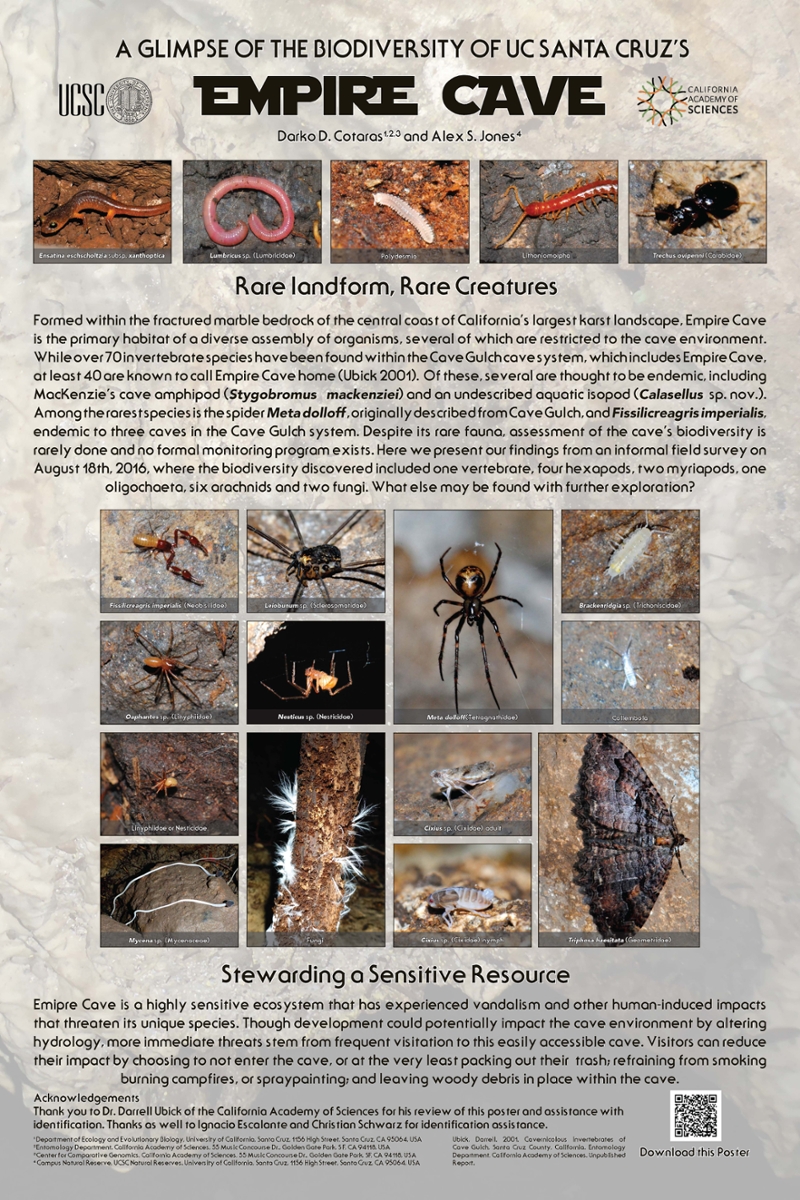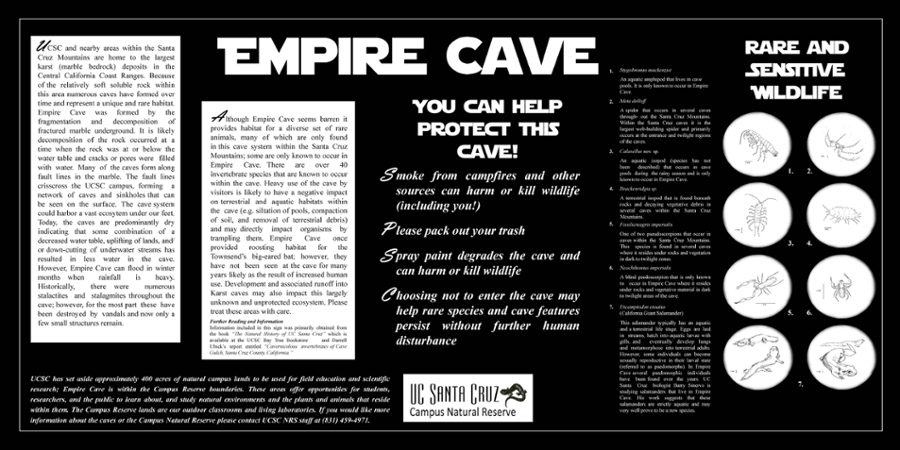A Glimpse of Empire Cave's Biodiversity
Stewarding a Sensitive Resource
Emipre Cave is a highly sensitive ecosystem that has experienced vandalism and other human-induced impacts that threaten its unique species. In a study of over 1300 California caves, Empire Cave was ranked as the 3rd most biodiverse cave (Elliot et al. 2017). Though development could potentially impact the cave environment by altering hydrology, more immediate threats stem from decades of frequent visitation to this easily accessible cave. In order to protect the rare and endemic widlife that calls the cave home, in August 2023 UC Santa Cruz and the Campus Natural Reserve coordinated the construction of a wildlife-friendly gate to restrict access to Empire Cave. Access is currently limited to UCSC courses, research, and the Amah Mutsun Tribal Band.
Read more about the Empire Cave closure here.
Rare Landform, Rare Creatures
Formed within the fractured marble bedrock of the central coast of California’s largest karst landscape, Empire Cave is the primary habitat of a diverse assembly of organisms, several of which are restricted to the cave environment. Seventy-six species have been found within Empire Cave, most of which are invertebrates (Elliot et al. 2017). Of these, at least four are thought to be endemic to Empire Cave, having been found nowhere else on Earth. These include MacKenzie’s cave amphipod (Stygobromus mackenziei), Empire Cave amphipod (Stygobromus imperialis), and an undescribed aquatic isopod (Caecidotea sp. nov.), and Empire Cave psuedoscorpion (Neocthonius imperialis). Among the rare species is the Dolloff's cave spider (Meta dolloff), originally described from Cave Gulch, and the cave pseudoscorpion (Fissilicreagris imperialis), endemic to three caves in the Cave Gulch system. Despite its rare fauna, assessment of the cave’s biodiversity is rarely done and no formal monitoring program exists. We aim to develop such a monitoring program to document further changes in the cave's biodiversity.
This downloadable poster presents findings from an informal field survey on August 18th, 2016, where the biodiversity discovered included one vertebrate, four hexapods, two myriapods, one oligochaeta, six arachnids and two fungi. What else may be found with further careful, scientific exploration?
Empire Cave Biodiversity poster
(Click on link above to download a pdf of the 2 ft x 3ft poster pictured below)


